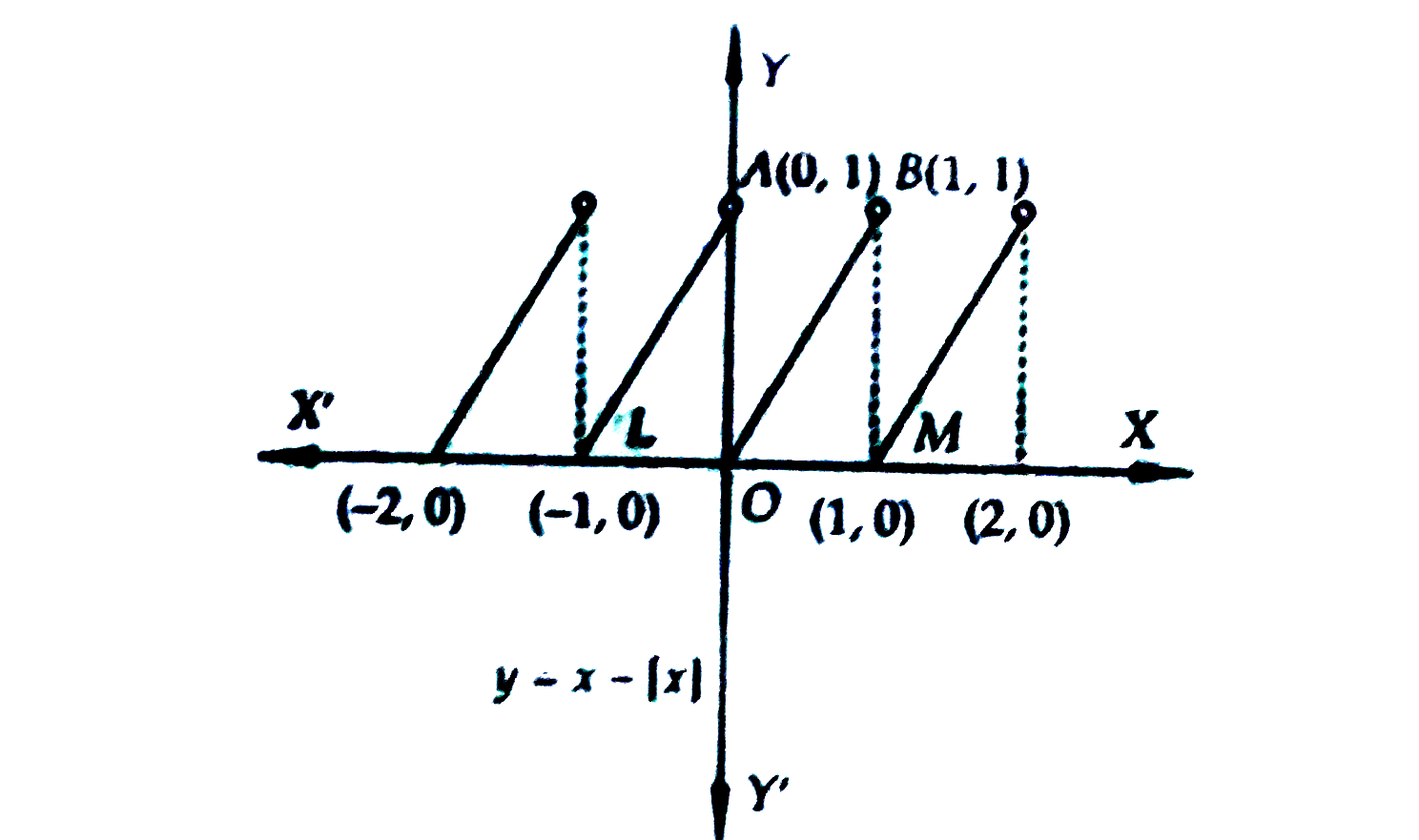Let f(x)=x−[x], for every real number x, where [x] is integral part of x. Then, ∫1−1f(x)dx, is
A
1
B
2
C
0
D
1/2
Video Solution
Text Solution
The correct Answer is:A
We have,
1∫−1(x−[x])dx=0∫−1(x−[x])dx+1∫0(x−[x])dx
1∫−1(x−[x])dx=0∫−1(x+1)dx+1∫0(x−0)dx
1∫−1(x−[x])dx=[(x+1)22]0−1+[x22]10=12+12=1
ALTER It is evident from the graph of y=f(x) that
1∫−1dx=Area of ΔOLA+Area of ΔOMB
⇒1∫−1f(x)dx=2(Area ofΔOMB)
⇒1∫−1f(x)dx=2×12(OM×MB)=1×1=1

|
Updated on:21/07/2023
Topper's Solved these Questions
- BOOK - OBJECTIVE RD SHARMACHAPTER - DEFINITE INTEGRALSEXERCISE - Section I - Solved Mcqs145videos
DEFINITE INTEGRALS
- BOOK - OBJECTIVE RD SHARMACHAPTER - DEFINITE INTEGRALSEXERCISE - Section II - Assertion Reason Type12videos
DEFINITE INTEGRALS
- BOOK - OBJECTIVE RD SHARMACHAPTER - CONTINUITY AND DIFFERENTIABILITYEXERCISE - Exercise86videos
CONTINUITY AND DIFFERENTIABILITY
- BOOK - OBJECTIVE RD SHARMACHAPTER - DERIVATIVE AS A RATE MEASURER EXERCISE - Exercise26videos
DERIVATIVE AS A RATE MEASURER
Similar Questions
Knowledge Check
- Question 1 - Select One
Let f(x)={x}, the fractional part of x then ∫1−1f(x)dx is equal to
A1B2C0D1/2 - Question 2 - Select One or More
Let h(x)=f(x)−(f(x))2+(f(x))3 for every real number x: Then
Ah is increasing whenever f is increasingBh is increasing whenever f is decreasingCh is decreasing whenever f is decreasingDnothing can be said in general. - Question 3 - Select One
Let f(x)=min[x+1,√1−x], then ∫1−1f(x)dx is
A16B56C76D116
Let f(x)=x−[x], for ever real number x,where[x] is the greatest integer less than or equal to x. Then, evaluate ∫1−1f(x)dx .
View SolutionIf f(x)=min({x},{−x})x∈R, where {x} denotes the fractional part of x, then ∫100−100f(x)dx is
View SolutionLet f(x)=cos√x where p=[a] where [x] is the integral part of x if the period of f(x) is π, then a∈
View SolutionLet f(x)=sin101x[xπ]+12, where [x] denotes the integral part of x is
View SolutionLet f(x)=x−{x+1}x−{x+2}, where {x} is the fractional part of x, then limx→1/3f(x)
View Solution

